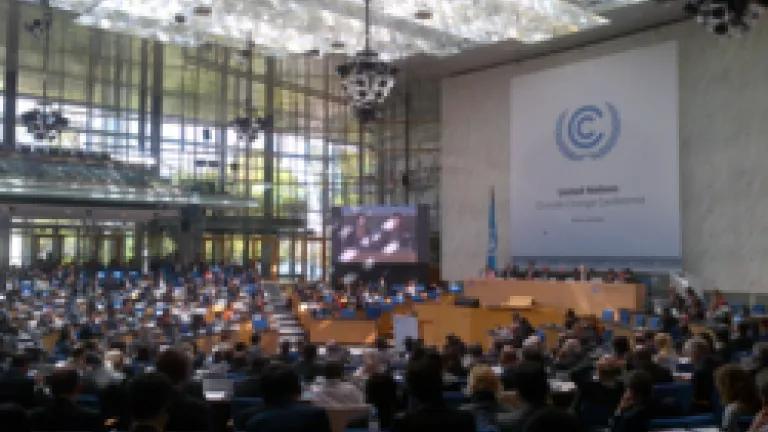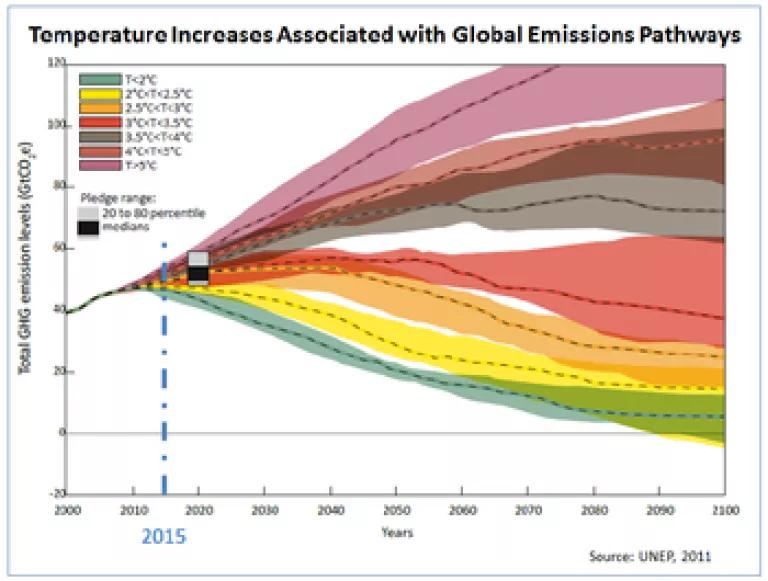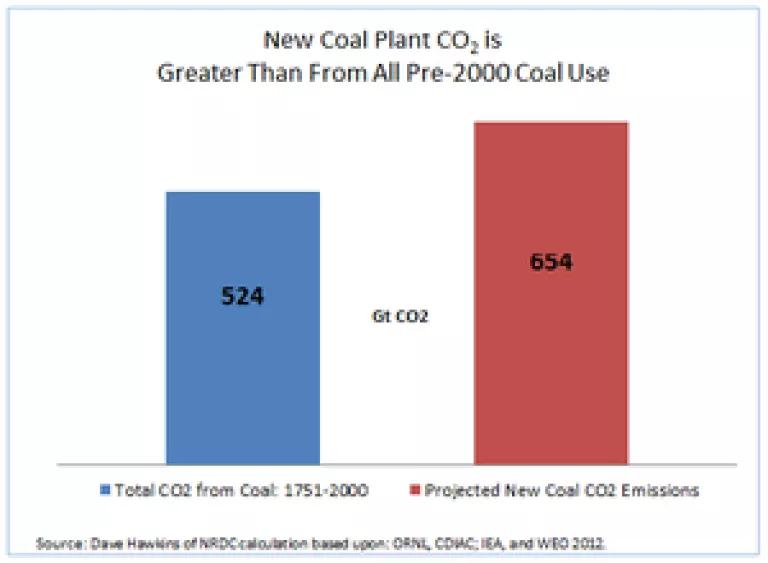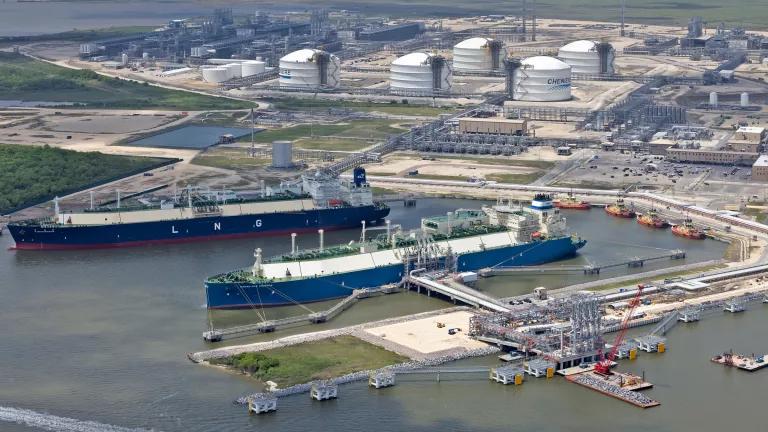
In December 2011 countries agreed in Durban, South Africa to secure a new international legal agreement by 2015. This is not the first time that countries agreed to finalize such an agreement. Cynics point out that countries continually agree to formulate something new in the next couple of years –consistently “kicking the can down the road”. After all, the agreement in Copenhagen was supposed to be the culmination of negotiations begun in 2007 in Bali Indonesia – under the “Bali Roadmap”. We can’t afford to miss this deadline, “fudge the results”, or “kick the can down the road”. As countries meet in Germany this week for the next round of climate negotiations it is important to remember that securing a new international legal agreement in 2015 is critical for five reasons.
Here are the top five reasons countries need to agree on a new international agreement in 2015 (add yours to the comment section below). [A subsequent post will discuss five reasons why countries can secure a global agreement in 2015].
1. Uncompromising Math of Global Warming Pollution
Unfortunately global warming presents us with daunting and uncompromising math regarding how much global warming pollution can be emitted. According to various scientific studies, global emissions need to peak very close to 2015 (see figure**).

Failure to have emissions peak around 2015 leaves the world with two bad choices. The less action that is taken early, the more that must be done in the future. While this seems acceptable to some, it is like waiting to buy life insurance until right before you think the end of your life is near – the cost goes up dramatically and you risk not making the needed investment in time. If the world waits for action we make a dangerous bet that could leave our children and grandchildren on dangerous ground. The second choice that we are left with if we fail to act early is to guarantee that we are leaving humanity with more dangerous climate change such as more frequent extreme weather, more droughts, heat waves, and floods. We fail to cut emissions enough and we bake into the system more damages from climate change. Neither choice – hope we buy life insurance fast enough or lock us into more climate impacts – is in our self-interest.

At the same time, failure to act by 2015 could lock-in emissions for decades to come. New power plants, buildings, city designs, and lifestyles are being formed as we speak. How these are built could lock us into decades of increasing climate pollution as many of these last for several decades at a minimum. A prime example is in the electricity sector where the emissions of power plants that the International Energy Agency projects could be developed in the next two decades would be larger than the emissions of coal from the beginning of the industrial revolution and eat up a huge chunk of the amount of carbon that can be emitted by all sectors (see figure***).
The current targets aren’t deep enough to address climate change and most countries only made commitments through 2020. So there is a need to deepen and extend the emissions reduction commitments.
2. Impacts are happening now
Climate change is starting to wreak damages across the world, showing us vividly that our failure to act has consequences. This damage will only get worse if we fail to do even more to reduce climate pollution. Every year of inaction puts us closer to key tipping points on climate change. In fact, many argue (including the most vulnerable countries such as the small island states) that 2015 is too late as we are already reaching unprecedented global emissions levels (e.g., with researchers tracking when we’ll exceed 400 ppm CO2 for the first time in human history) and locking in huge investments in climate-destructive actions (e.g., over $600 billion per year is still being invested in finding the next batch of fossil fuels). With devastation occurring all over the place it is hard for world leaders to argue that they can wait a little longer to commit to new and more aggressive action. Such a decision is made with glaring examples of the consequences of inaction.
3. Keep politicians focused
Political leaders can get distracted with each new immediate crisis. The focus on the meeting in Copenhagen put decisions on climate action to the forefront of politicians thinking. Leaders were asked consistently “what steps are you going to implement to address climate change”. Focusing on a new agreement in 2015 will (hopefully) refocus politicians on the urgency of acting on climate change.
In addition, some new faces will be in charge of some of the key countries in 2015. Several major countries will have a new batch of political leaders since Copenhagen with new leadership in China, Brazil, France, United Kingdom, Mexico, South Korea, and Japan. These new leaders need to be prepared to put their own stamp on the climate action of their country. They’ll have to tell their counterparts about the kind of action that they’ll implement to address climate change.
4. Need sufficient time for countries to follow through with concrete action at home
In Copenhagen, countries accounting for over 80 percent of the world’s emissions made specific commitments to reduce their pollution. Implementation of the actions to meet these commitments are still being implemented. It takes time in many countries to develop the appropriate policy for their specific context, secure national agreement amongst the public, and implement the necessary changes to laws and regulations. We need a clear political signal in 2015 to ensure that countries put in place sufficient policies by 2020.
We also need a global agreement in 2015 to ensure that countries are implementing the commitments that they set out in 2009 and that are supposed to be fully met in 2020. Put simply 2015 is a good midway check-in to see whether or not countries are on track to meet their previous commitments. If countries come to the meeting in 2015 with little or no action at home it will be obvious to the world.
5. Critical moment for mobilizing finance
Renewable energy keeps growing, the pace of the loss of forests has slowed, and countries are putting in place changes to their laws and regulations. Likewise with the impacts of climate change materializing every day, countries are grappling with the need for new investments in helping them become more resilient to the impacts of climate change. Each of these actions have been aided from an important increase in investment in low carbon and adaptation activities by both public and private resources – with developed countries investing $30 billion over the past three years in these activities. And lots of new investment models and tools are starting to materialize that could aid countries in making smart climate investments.
Each of these actions are at critical tipping points that could be pushed over the top with a more sustained and deeper investment of financial resources. For example, in many countries renewable energy is cost competitive or very close. Continued investments now could further push down this cost curve so that we are no longer faced with the dilemma of choosing between dirty and clean energy – the choice will be made for us as clean energy will be the best economic investment.
Countries will need to outline specific actions that they’ll implement to scale investments to the $100 billion that countries committed to in Copenhagen. And we’ll need major investors to see that investing in climate smart actions is the only kind of acceptable investment.
------------------
* Picture: Taken by Jake Schmidt, UN Framework Convention on Climate Change Conference Center in Bonn, Germany
** Temperature increases under various emissions pathways, from UNEP; bottom ranges (light blue and yellow) show that emissions need to peak around 2015; ranges with later peak periods lead to higher temperature increases.
*** Calculated by David Hawkins, NRDC. Assumes that the new coal capacity forecast by IEA WEO2012 under current policies is built and the CO2 is released.




